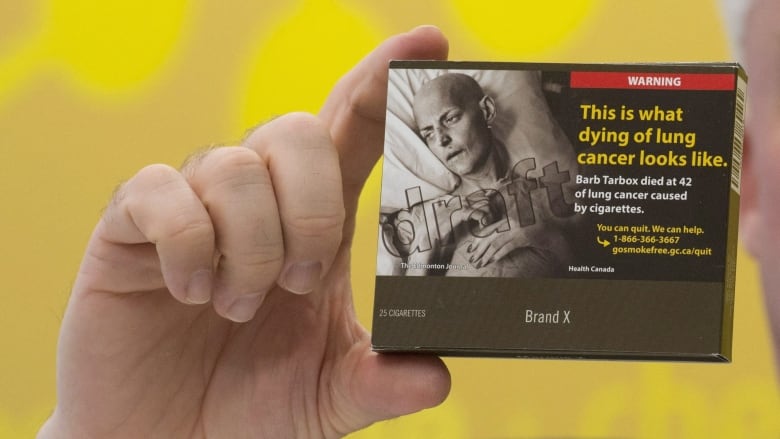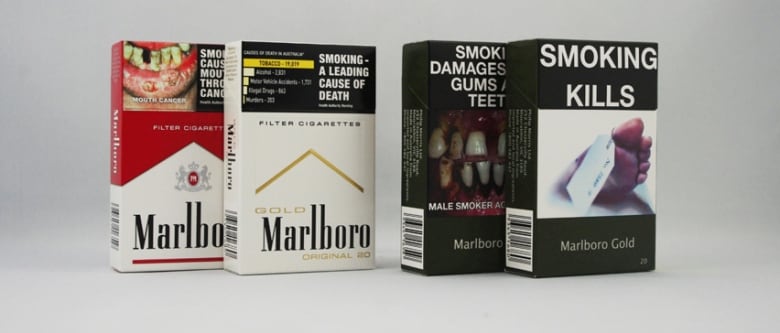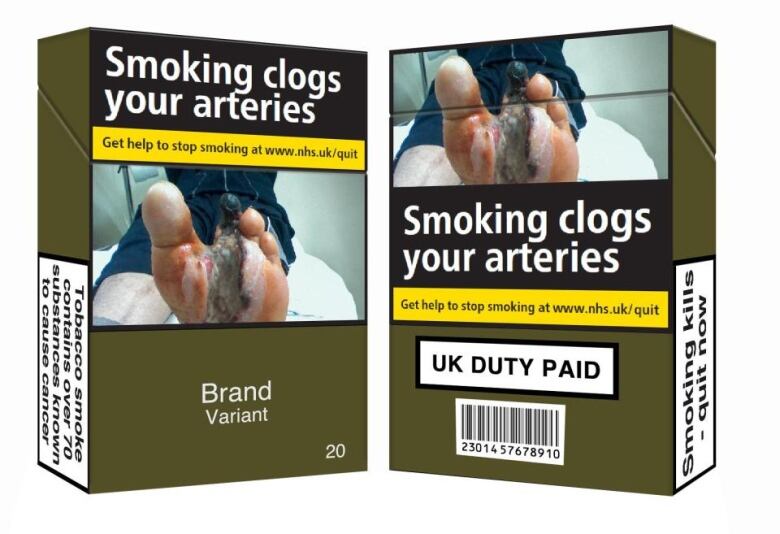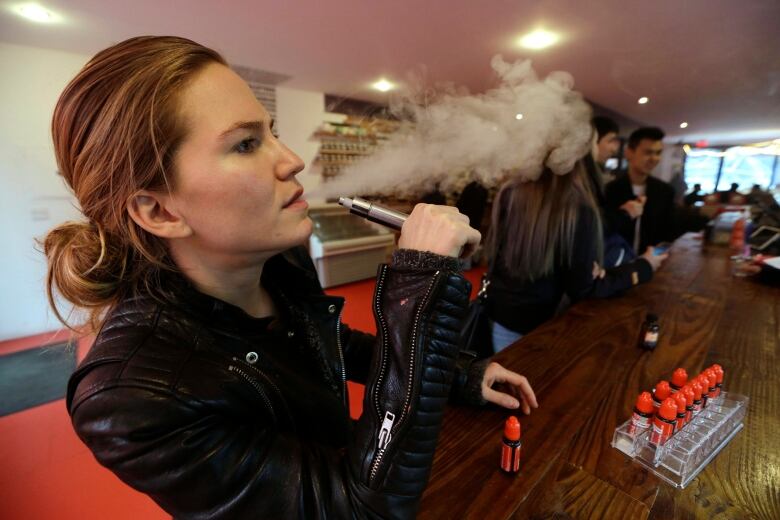Parliament passes plain tobacco packaging law, regulates vaping
'The real reason that people start smoking is not because of the pack,' Imperial Tobacco says

The Liberal government has passed a sweeping overhaul of the country's tobacco laws legislation that will formally legalize (and heavily regulate)vaping and give Health Canada the powers it needs to mandate plain packaging for cigarettes.
The bill, S-5, is one of the most ambitious overhauls of the Tobacco Act in a generation. It enacts changes that have prompted vocal opposition from the country's largest tobacco companies and their allies, like convenience store owners who are steadfastly opposed to measures that will force them to remove their brands from cigarette and other tobacco packages.
The bill doesn't dictate exactly howplain packaging should be imposed, but a Health Canada backgrounder says the new Tobacco and Vaping Products Act will "provide ... arange of options such as standardized colour, font and finish, and prohibitions on promotional information and brand elements, such as logos."
A spokesperson for Health Canada did not say exactly when the new regulations would land, but added such regulationstypically come into force 180 days after they are finalized by the department.
The bill's defenders have said these new regulations will make smoking less appealing by all but eliminating the uniqueness ofparticular brands,and help end an "epidemic" of tobacco-related deaths which the government suggests number over 45,000 peryear.
Under existing regulations, branding is already quite limited because health warningscover roughly three quarters of a traditional cigarette pack.
What the bill does:
- Gives Health Canada the power to implement plain and standardized tobacco packaging.
- Applies many of the existingtobacco regulations to vaping products.
- Prohibits the sale of vaping products to minors.
- Restricts "lifestyle" advertising for vaping products, the use of testimonials, or any reference to e-cigarettes as healthier than standard tobacco products.
- Bans certain flavours like "confectionery" and cannabis for vaping products.
Critics argue the new rules will simply bolster an already flourishing market for cheaper contraband cigarettes, and often cite the mixed (and contested)results of Australia's move to enactplain packaging.
"The real reason that people start smoking is not because of the pack. There is no evidence of that in every piece of research that Health Canada has cited," Eric Gagnon, the director of government relations atImperial Tobacco Canada, said in an interview with CBC News.
"The people who start smoking do not see a package today and say, 'Well, this package has red on it. I think I'm going to start smoking.' That's not the way it works ... It's more of a PR initiative than anything else."

But Rob Cunningham, a policy analyst at the Canadian Cancer Society, said he thinks the tobacco industry is upset by plain packaging for a good reason.
"Of course plain packaging would be effective. Why else would the tobacco industry be so opposed?" he said.
"The package is the most important type of tobacco advertising that remains in Canada today. Tobacco is addictive and lethal, and should not be sold in packages made to be more attractive, period."
Gagnon said Imperial Tobacco, which produces popular brands like du Maurier, Pall Mall, Peter Jackson and Player's, is considering legal action to protect its intellectual property rightsif Health Canada proceeds with "extreme" regulations.
"It's too early to say because we haven't seen the regulations,but it is one of the avenues we'll have to look into if we believe the government is going too far," he said. "It's not off the table."
Plain packaging rules are already in place, with some variations, in Australia, France, the United Kingdom and Ireland. A legal challenge by tobaccofirms in the U.K. was rebuffed by that country's highest court.

'Less harmful source of nicotine'
The Liberal government haspitched the other major componentof the billnew regulations for vaping devices as a tool to move adult smokers away from traditional cigarettes, while giving them access to the nicotine they crave.
"BillS-5 will also provide adults the legal access to better-regulated vaping products. These products can serve as a less harmful alternative to cigarettes and can be a much-needed option for those who have been unable to quit smoking," Peter Harder, the government's representativein Senate, said in a recent speech on the bill.
Independent Quebec Sen. Chantal Petitclerc, the bill's sponsor in the upper house, called regulated vaping "an important tool" for ensuring "a less harmful source of nicotine" as the government looks to cut the percentage of the population that smokes from the current15 per cent to less than 5 per cent by 2035.
The vaping industry has beenoperating largely beyond the reach of regulatorssince e-cigarettes emerged as an alternative to smoking some ten years ago.
The e-cigarette a battery-powered device that lookslike a traditional cigarette delivers inhaled doses of nicotine-containing vapour. Until now, vaping products have been sold under a lighter regulatory burden than the one imposed on cigarettes.
The bill, which is expected to receive royal assent shortly, demands compliance with the new vaping regulationswithin 180 days.

Those regulations include a move to cut the number of flavours that can be used inan e-cigarette,banning any flavour designed to mimic"confectionery,"cannabis, soft drinks or energy drinks flavours some parliamentarians believe are designed to hook young people on these devices.
The bill also prohibits the sale of vaping productsto minors, or sending a vaping product to a minor.
The bill restricts most promotional activity around vaping products, forbidding the use of testimonials and references to health effects andadditives.
Anti-smoking advocates maintain these regulations are necessary because any reference to an e-cigarette as safer than the traditional variety could be misleading. While vaping devices are often sold assmoking cessation aides, critics maintain they're not entirely harm-free.
However, a recent review by tobacco experts atPublic Health England foundthat e-cigarettes are considerably less harmful than traditional cigarettes.
"Anyone who has struggled to quit should try switching to an e-cigarette and get professional help," the government agency recommended in its February 2018report.












_(720p).jpg)


 OFFICIAL HD MUSIC VIDEO.jpg)
.jpg)



























































































